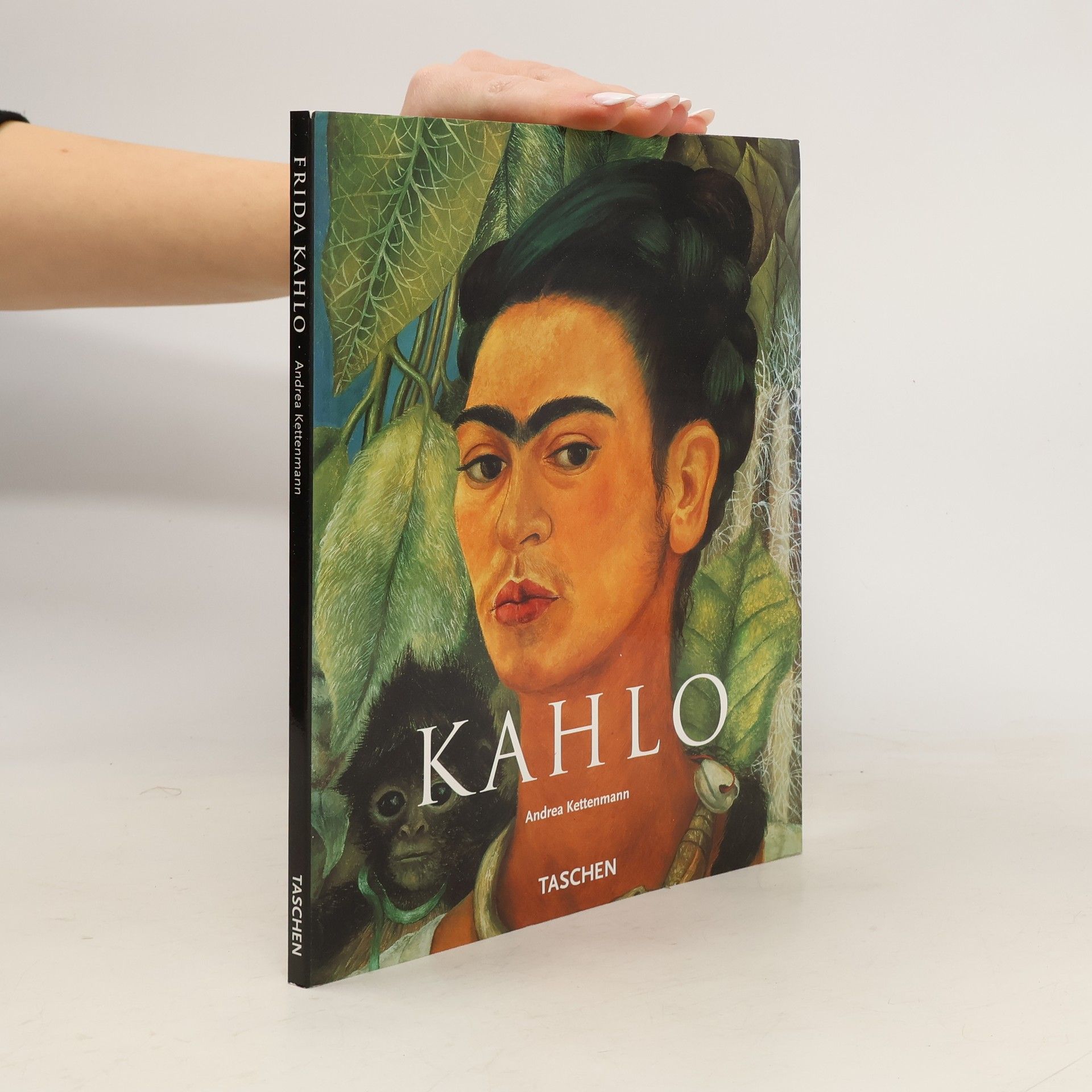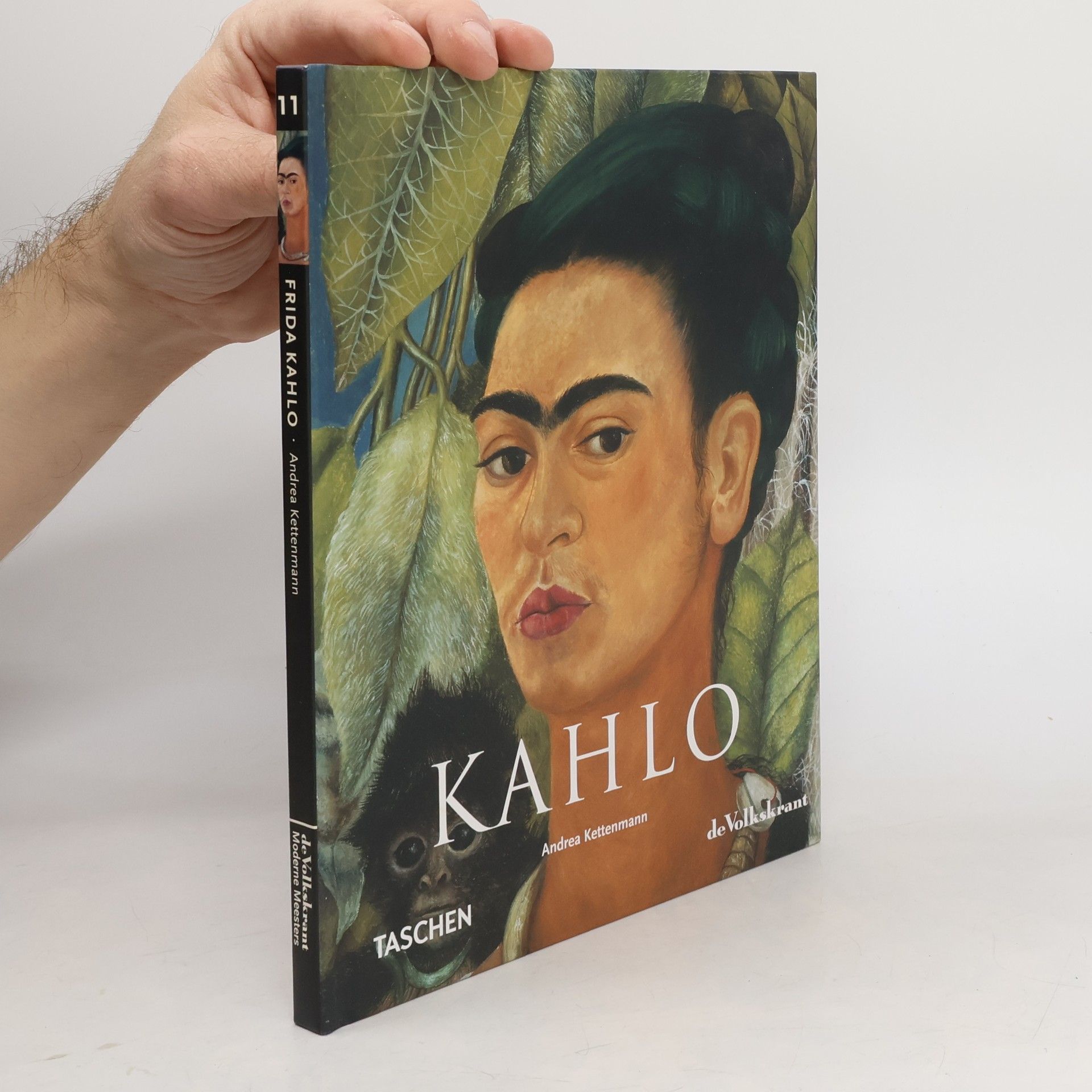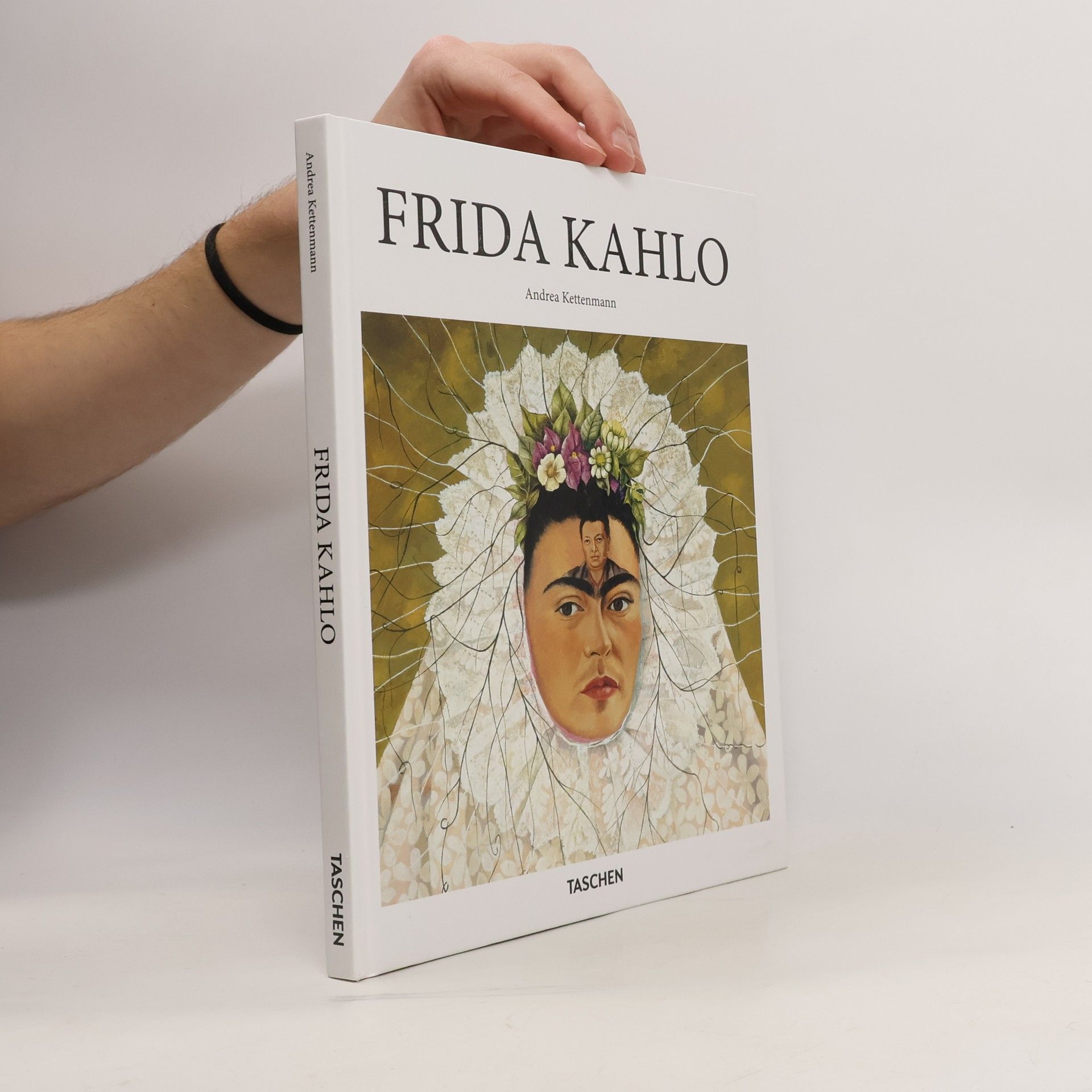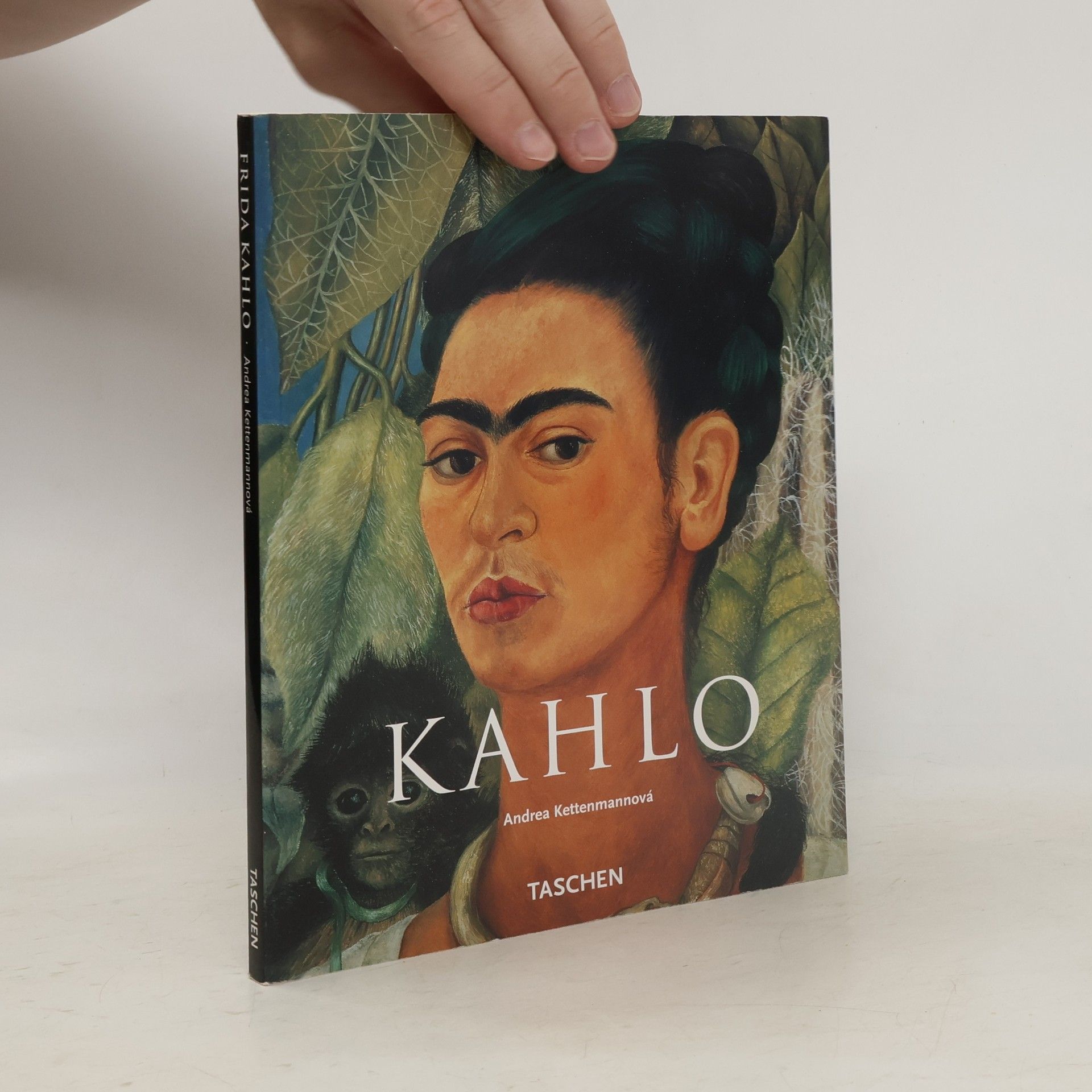Andrea Kettenmann Book order






- 2007
- 2006
Frida Kahlo mala život rovnako pestrý a drsný ako sú jej obrazy. Odráža sa v nich všetko – tragická nehoda v mladosti, ktorá z nej urobila celoživotného invalida, kubizmus maliarskych začiatkov i naivné umenie v kombinácí so surealizmom vyzretejšieho obdobia. Nezanedbateľný je aj vplyv jej manžela maliara Diega Riveru a génov, ktoré jej predala kreolská matka a otec – maďarský Nemec židovského pôvodu. Počas svojho života namaľovala Frida Kahlo približne 200 obrazov – najlepšie z nich predstavuje táto publikácia.
- 2003
Frida Kahlo 1907-1954 : Leid und Leidenschaft
- 96 pages
- 4 hours of reading
- 2000
Frida Kahlo 1907-1954: Pain and Passion
- 96 pages
- 4 hours of reading
Die faszinierenden Bilder von Frida Kahlo (1907-1954) waren in vielerlei Hinsicht Ausdruck ihrer Traumata. Ein fast tödlicher Unfall mit 18, gesundheitliche Probleme, eine turbulente Ehe, Fehlgeburten und Kinderlosigkeit: Die Malerin verwandelte ihre persönlichen Schicksalsschläge in revolutionäre Kunst . In ihren Selbstporträts blickt Kahlo den Betrachter mutig und herausfordernd an. Sie lehnte es ab, die Rolle des passiven Opfers einzunehmen, und verarbeitete stattdessen ihre Erfahrungen zu einer hybriden surreal-realen Sprache des Lebens , bestehend aus Haaren, Wurzeln, Adern, Ranken, Tentakeln und Eileitern. Viele ihrer Werke befassen sich auch mit den politischen Idealen des Kommunismus , die Kahlo mit ihrem Mann Diego Rivera teilte. Die Künstlerin beschreibt ihre Bilder selbst als „ das ehrlichste und wahrhaftigste, das ich tun konnte, um auszudrücken, was ich innerlich und äußerlich fühlte “. Dieser Band präsentiert eine Auswahl an Kahlos Werken und untersucht ihre Bedeutung als Malerin, feministische Ikone und Vertreterin der Kultur Lateinamerikas.
- 1997
Diego Rivera : 1886-1957 : A Revolutionary Spirit in Modern Art
- 96 pages
- 4 hours of reading
Diego Rivera - A revolutionary and troublemaker It was as a revolutionary and troublemaker that Picasso, Dalí and André Breton described the husband of Frida Kahlo, Diego Rivera, but he was also responsible for creating a public art that was both highly advanced and profoundly accessible. From 1910 Rivera lived in Europe where he absorbed the influence of Cubism. After the Mexican revolution, however, he returned to his homeland and harnessed the lessons of the European avant-garde to the needs of the Mexican people. His own murals, and those of the Mexican Muralists who followed his example, presented a utopian vision of a post-revolutionary Mexico. Rivera’s historical paintings expressed his interpretation of the revolution and its ideals, in a style that showed him returning to the pre-Columbian roots of Mexican culture, re-inventing a colourfully realistic visual idiom that could appeal directly to a largely illiterate people. This is the first study which, independently of the exhibition circuit, coherently presents the work of this extraordinary artist. About the Each book in TASCHEN’s Basic Art series
- 1997
Rivera
- 96 pages
- 4 hours of reading
Painter, Marxist activist, and husband of Frida Kahlo, Diego Rivera is renowned as much for his active politics as for his monumental mural paintings. This introduction explores his unique and visionary renderings of a modern Mexico, combining communist passion, pre-Columbian heritage, and the influences of European modernism.
- 1992
Frida Kahlo
- 96 pages
- 4 hours of reading
Un retrato de una artista, sobre todo una artista. (Portrait of an artist, always an artist, above all an artist.)
